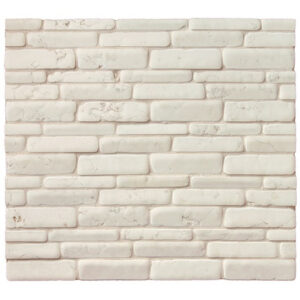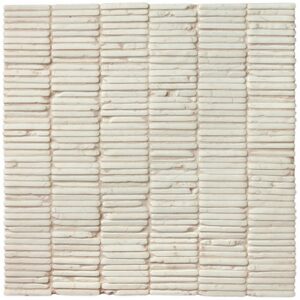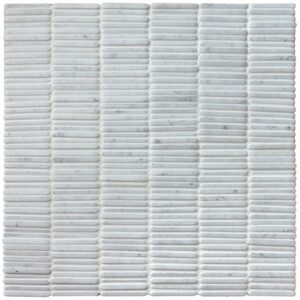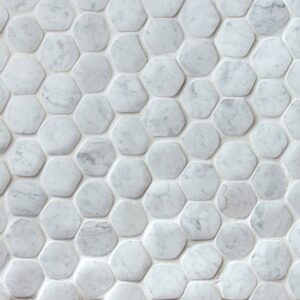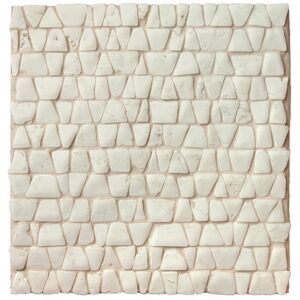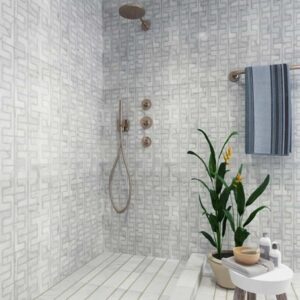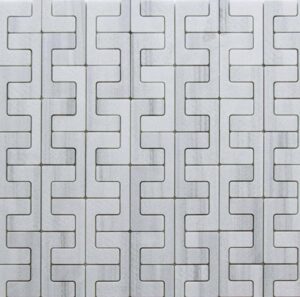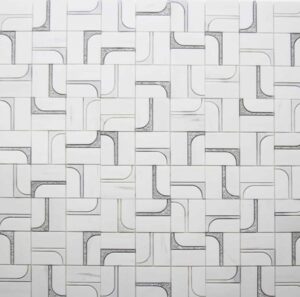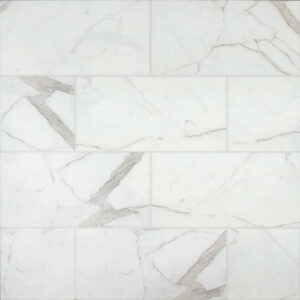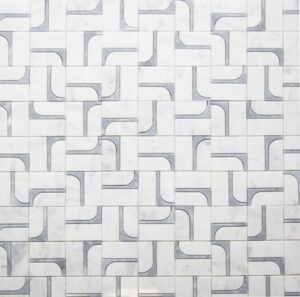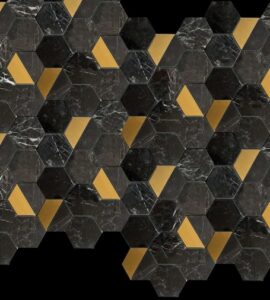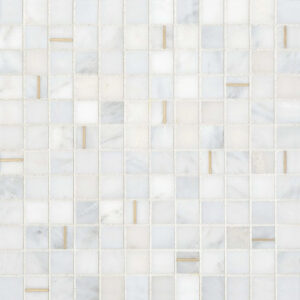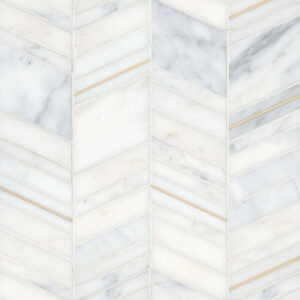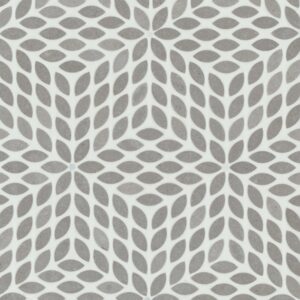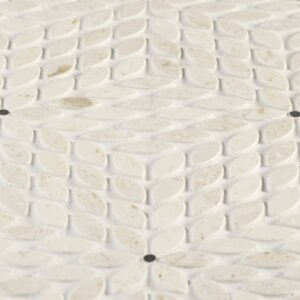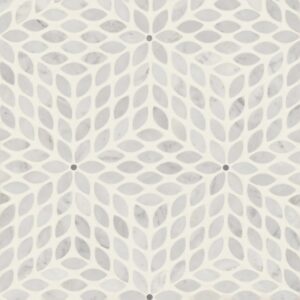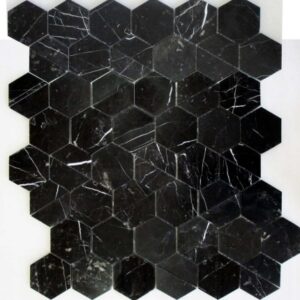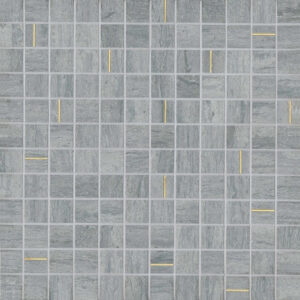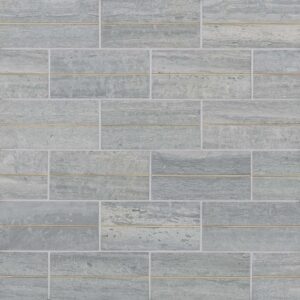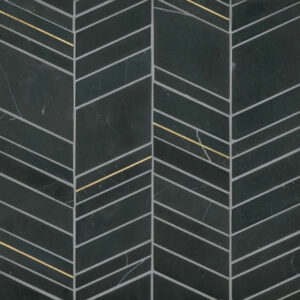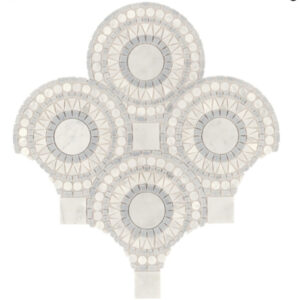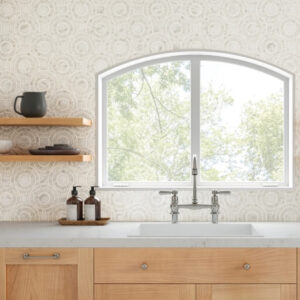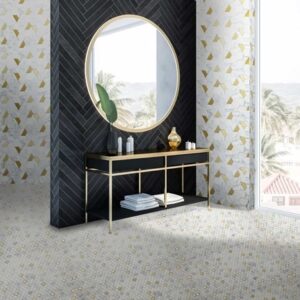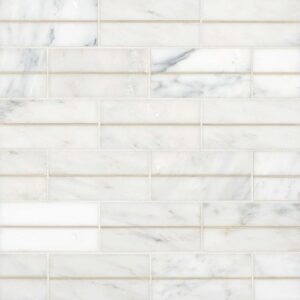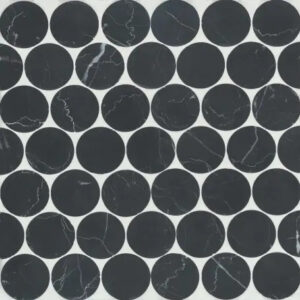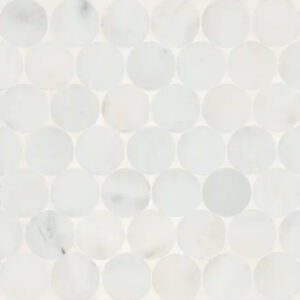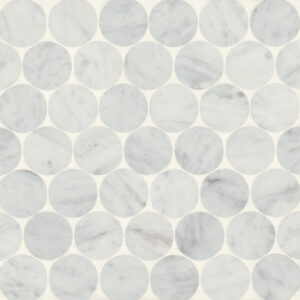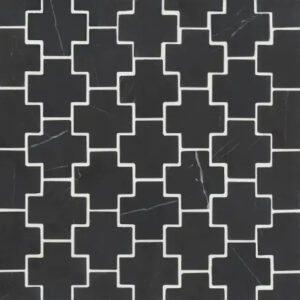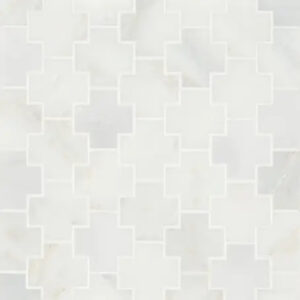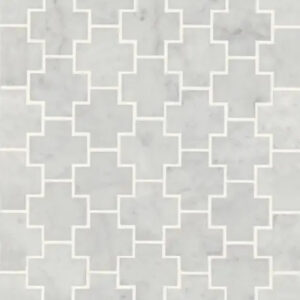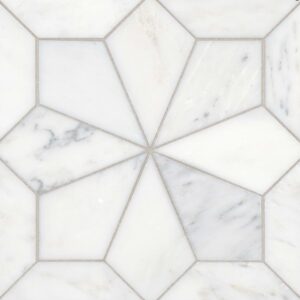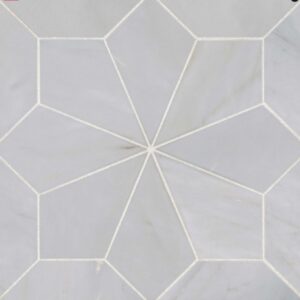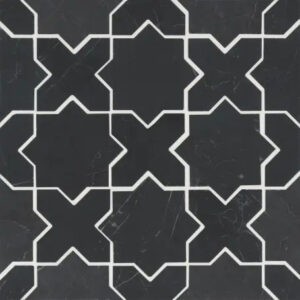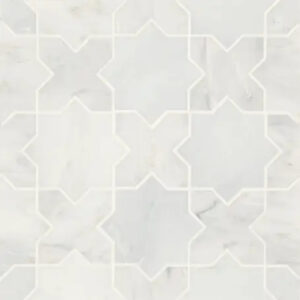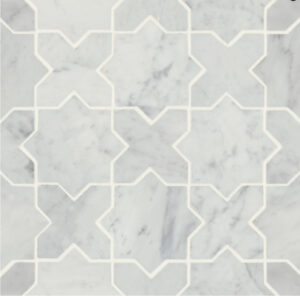97 results
Revered since antiquity, marble stands as an emblem of refined taste and opulence. Its intrinsic natural beauty, characterized by flowing veins and a luminescent sheen, has made marble tile an excellent choice for homeowners seeking to infuse spaces with luxury and character. The natural stone, with its array of colors and patterns, offers a versatile solution for your next tiling project, ranging from classical to contemporary.
Types of Marble Tiles
- Carrara marble is one of the most popular varieties, known for its soft white or blue-gray background with delicate gray veining. It’s quarried in Carrara, Italy and has been used in sculpture and architecture for centuries. Carrara tiles offer an elegant, timeless look suitable for many design styles.
- Calacatta marble is often confused with Carrara, but it tends to be whiter with bolder, more dramatic veining. It’s considered more luxurious and rare. Calacatta tiles can create striking visual impact in bathrooms, kitchens, or entryways.
- Emperador marble comes from Spain and is characterized by its rich brown color with lighter veining. It’s available in light, medium, and dark variations. Emperador tiles can add warmth and sophistication to a space.
- Nero Marquina marble, also from Spain, features a deep black background with stark white veining. This high-contrast appearance makes for dramatic and eye-catching tile installations.
- Statuario marble is another high-end Italian variety, prized for its bright white background and prominent gray veining. It’s often used in upscale projects to create a sense of opulence.
Types of Marble Tile Finishes
Marble tiles come in various finishes that can significantly affect their appearance and functionality. The most common finishes include polished, honed, tumbled, and brushed.
Marble with a polished finish has a glossy, reflective surface that brings out the full color and veining of the stone, making it popular for formal or luxurious settings.
Honed marble has a smooth but matte finish, offering a more subdued look that’s less slippery and hides minor scratches better than polished marble.
Tumbled marble has a worn, antique appearance with slightly rounded edges, giving spaces a rustic or Mediterranean feel.
Brushed marble is created by brushing the surface with diamond-tipped brushes, resulting in a textured, slightly worn look that’s less formal than polished but smoother than tumbled.
Each finish has its own aesthetic appeal and practical considerations, such as slip resistance and maintenance requirements, allowing homeowners to choose the best option for their specific needs and design preferences.
Where to Use Marble Tiles
Floors: Marble floor tiles in entryways, living rooms, or dining areas make a grand statement. Their ability to reflect light can make spaces seem larger and more luminous. The cool nature of classic white marble also makes it a favored choice for warmer climates.
Bathroom: A marble-clad bathroom feels spa-like and opulent. From the bathroom floor to shower walls to countertops, marble‘s water-resistant properties make it suitable for such moist environments. Marble wall tile, complemented by matching vanity tops, can elevate the entire ambiance of your bathroom remodel. Use marble mosaic tiles in a bathroom backsplash, marble herringbone tile in the shower or large format tiles on shower floors.
Kitchen Backsplashes: Marble stone tile backsplashes, especially in hues like white with gray veining, have become a trend in modern kitchens. A marble backsplash tile with light gray grout lines seamlessly blends with an extra-large marble slab or quartz countertop, offering a cohesive and upscale look in your kitchen.
Fireplace Surrounds: Encasing a fireplace with white marble tiles not only enhances its aesthetic appeal but also benefits from the stone‘s heat-resistant properties.
Staircases and Foyers: For homes with a grand architectural vision, marble floor tiles on staircases serve as a centerpiece, exuding elegance with every step. Marble flooring in your home’s foyer or living room is a stunning focal point and design statement.
Caring for Marble Tiles
Marble, despite its robust appearance, is a porous stone that requires care to maintain its pristine beauty.
- Sealing: Marble tiles should be sealed upon installation and periodically afterward, usually once every one to two years. Sealing protects the stone from staining, especially in spill-prone areas like kitchens or high-traffic areas with marble tile floors.
- Daily Cleaning: For routine cleaning, use a soft cloth or mop along with warm water. Ensure that the water is not too acidic or too alkaline. Specialized marble cleaners are also available but ensure they’re pH-neutral to avoid damaging the stone.
- Avoiding Harsh Chemicals: Acidic substances like lemon, vinegar, or many household cleaners can etch marble‘s surface. Always check the cleaner’s suitability for marble before application.
- Immediate Spill Response: If there’s a spill, especially of acidic substances like wine or tomato sauce, blot it up immediately using a soft cloth. Avoid wiping as it can spread the spill. This swift action prevents potential staining or etching.
- Polishing and Honing: If the marble loses its shine or gets scratched over time, professional polishing can restore its gleam. For floors, honing can provide a more matte finish, which might be less slippery and more suited to high-traffic areas.
- Protection: Use coasters under glasses, especially those containing acidic drinks. For marble floors, consider using felt pads under furniture or rugs in high-traffic areas to prevent scratching.
- Regular Inspections: Periodically inspect your marble for signs of wear or damage. Addressing issues early can prevent more significant problems in the future.
Marble tiles encapsulate a blend of nature’s artistry and human craftsmanship. While they undeniably elevate a home’s aesthetic quotient, they also demand respect and care in return. Investing time in their maintenance ensures they remain a testament to luxury and elegance for years to come. Whether you’re looking to create a classic Roman bath atmosphere or a modern gourmet kitchen, marble‘s timeless appeal is sure to impress.


